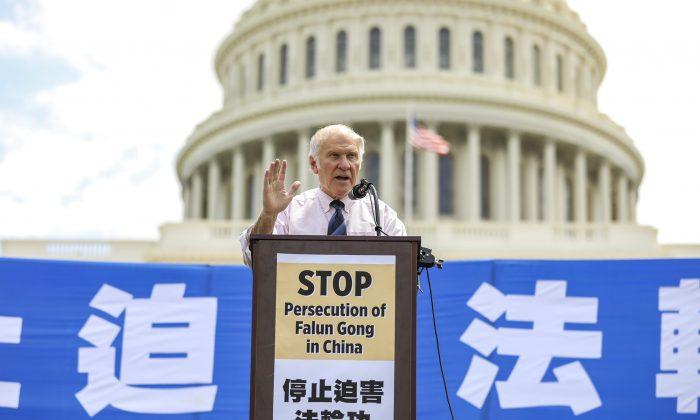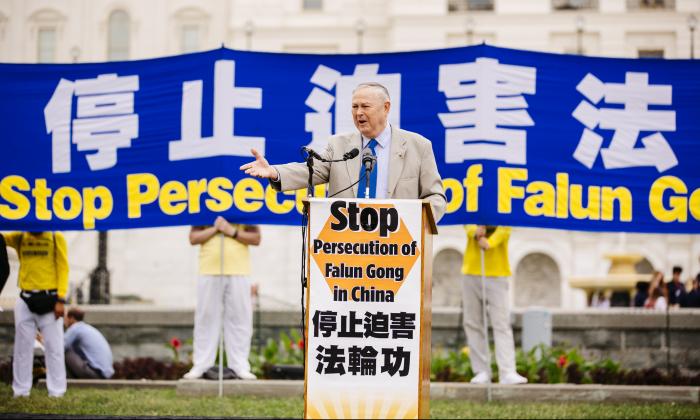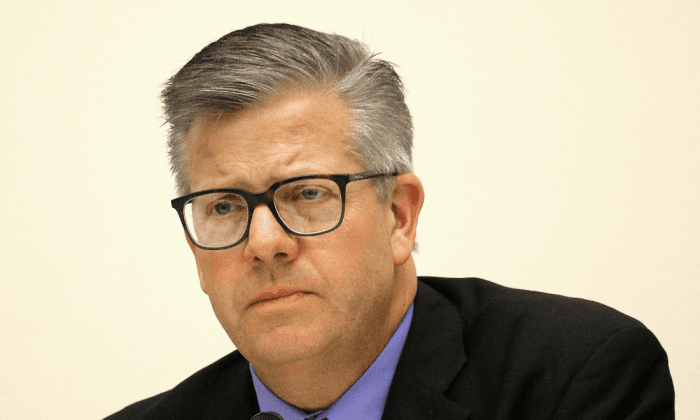WASHINGTON—The U.S. Nuclear Regulatory Commission (NRC) removed a major obstacle to four new nuclear reactors in Georgia and South Carolina when it announced Dec. 22 that it had certified an amended version of Westinghouse’s AP1000 reactor design for use in the United States. The enhanced design will better enable nuclear power plants to withstand the impact of an aircraft.
About a decade ago in 2001, the nuclear industry spoke of a “nuclear renaissance,” because of the appeal of low cost, clean, nuclear energy replacing fossil fuels and dependence on foreign oil. With the anticipated approval of new reactors in Georgia and South Carolina early in 2012, there is talk now of a “nuclear revival.”
Overseas, many countries have expressed interest in nuclear energy, and most notably in Asia, several are building new reactors, or are assessing the possibilities. Mainland China leads, with 14 nuclear power reactors in operation, and more than 25 under construction, according to the World Nuclear Association.
The voice of the U.S. nuclear industry is the Nuclear Energy Institute, which actively promotes nuclear power: “Nuclear power plants produce nearly 20 percent of U.S. electricity. No other source of electricity can provide the combined benefits of nuclear energy: large amounts of reliable and affordable electricity, long-term price stability, and no greenhouse gas emissions.”
So, does nuclear energy have a viable future?
No, say two experts from the Institute for Energy and the Environment of the Vermont Law School. The economic realities and safety concerns have all but doomed the nuclear industry unless it is able to be financed by massive government subsidies and loan guarantees, they contend.
Peter Bradford was a member of the Nuclear Regulatory Commission (NRC) for five years and was chairman of the New York and Maine state utility regulatory commissions. On a Dec. 28 telebriefing, he said, “It becomes clear that we are witnessing not a revival but a collapse in expectations for new reactor construction. The two forthcoming projects [i.e., Georgia and S.C.] are all that remain of a 31-reactor fleet that was said to constitute the real ‘nuclear renaissance’ as recently as early 2009.
“It is important to understand that this collapse was well underway before the accident at Fukushima.”
Bradford said that in 2002 the nuclear energy industry forecasted increasing plant capacity to 50 gigawatts by 2020—the equivalent of 40 to 50 new reactors. Today, the industry realistically puts the number at four to eight reactors, a reduction of 90 percent.
Bradford says the industry has suffered major setbacks: rising nuclear construction cost estimates, indefinite delays and accidents, and falling costs of energy alternatives—most notably natural gas. These factors have eliminated the need for the 30-plus new plants. All have announced cancellations, cost overruns, or significant delays, and only a handful “even pretend to be on a serious pathway to a definite scheduled completion.”
Bradford agrees with John Rowe, the CEO of Exelon, which owns the nation’s largest nuclear fleet of 17. Rowe said recently Exelon is not interested in building a third additional plant at Calvert Cliffs, Md., because it would be “utterly uneconomic.” Cited by NEI Smart, Rowe said, “At today’s [natural] gas prices, a new nuclear power plant is out of the money by a factor of two.”
Fukushima Raises Safety Issues
The Fukushima Daiichi nuclear disaster in March 2011 magnified the economic problems that the nuclear renaissance faced, according to Mark Cooper, who is a colleague of Bradford’s at the Institute for Energy and the Environment, Vermont Law School, and the author of a recent paper, published Dec. 2011, “Nuclear Safety and Nuclear Economics.”
“History shows that each major nuclear accident has caused re-examination of the risks of nuclear power, leading to more stringent safety requirements at higher costs,” Cooper said.
Cooper added that after Three Mile Island in 1979, concerns about nuclear safety increased and the NRC became more vigorous in the enforcement of the rules, which magnified the cost problem.
The Aug. 23 Virginia earthquake was said to be the biggest one on the East Coast in 67 years, according to CBS News. Carol Werner, executive director, Environmental and Energy Study Institute (EESI) said at the telebriefing that nuclear plants in the county of the epicenter were not built to withstand an earthquake with such magnitude (5.8). Two nuclear reactors at the North Anna Power Station were automatically shut down, according to CBS News.
As a troubled investment with projected higher costs and risks, Fukushima—the world’s second worst nuclear accident—aggravates an already difficult situation. Cooper said costs of the accident are estimated as high as $250 billion, bankrupting Tokyo Electric Power Company (TEPCO), the fourth largest utility in the world. The Chernobyl disaster in 1986 is estimated at $700 billion.
“These are numbers no [company] in a market economy can sustain,” said Cooper.
In the United States, the liability estimate for a reactor is around $12.5 billion—well behind the at least $100 billion for Fukushima, said Bradford. It’s not possible to insure against the risk.
Moreover, “The accident happened in a nation where it was not supposed to happen,” said Cooper. It occurred in Japan, which was assumed to have a high standard of safety and first-rate technical skills.
The perceived risks of nuclear power were heightened when the public witnessed “the drama and trauma of losing control of a nuclear reactor in real time,” Cooper said.
Cooper said the Japanese government recently estimated that the cost of power from nuclear reactors will be 50 percent higher than seven years ago.
New safety concerns have forced the NRC to impose additional costs on existing reactors. “The pressure is going to be substantial,” such that every site will require significant upgrades for safety, retrofitting existing reactors, Cooper said.
Bradford said that the reactors that have been retired occurred before their licensing period elapsed. They were retired because the costs of modifications to continue operation surpassed the income they would accrue. Early retirements of nuclear reactors can therefore be expected.
“The next year is going to be a year of substantial reassessment—reassessment as to the real economics of falling demand, falling [natural] gas prices, rising costs, and reassessment in light of Fukushima,” Bradford said. The anticipated license approvals of new plants in Georgia and South Carolina do not portend a nuclear renaissance.
The nuclear industry is going to shrink, Cooper predicted. “If anything gets built in market economies, it’s through massive subsidies, not because the technology is the economically correct thing to do,” he said.






